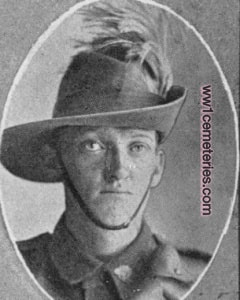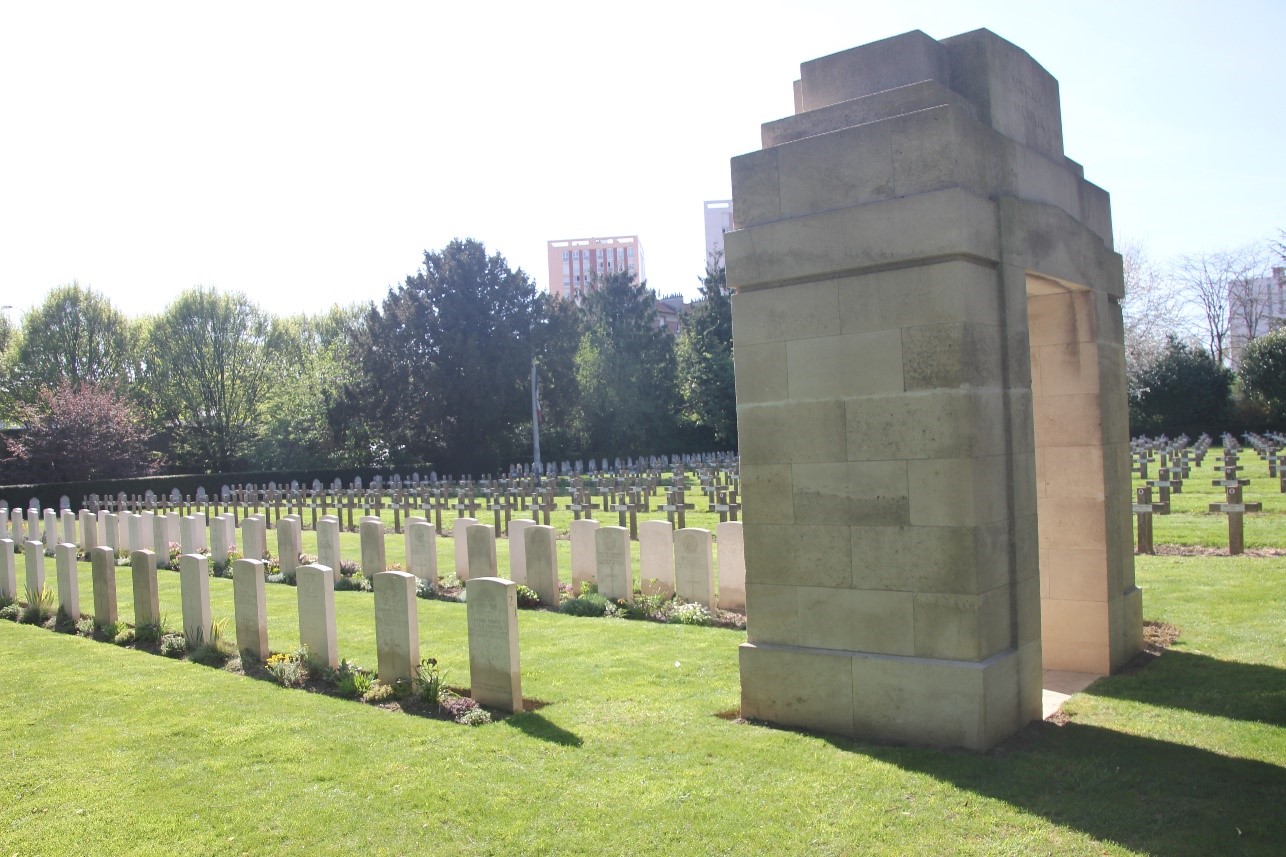Photo of CC Dixon from TGS School Magazine dated May 1919Photo of CC Dixon from TGS School Magazine dated May 1919Charles Chisholm Dixon had a varied career in the army. He was not a Toowoomba native as he was born in Brisbane and enlisted there on 19 July 1915, making him one of the 36 000 men who enlisted in that month, inspired by the events at Gallipoli. His connection to the city stemmed from his education at Toowoomba Grammar School (1905-1907) and his parents’ residence in Lindsay Street, Toowoomba, during and after the war. Young Dixon began training at Enoggera and was posted to the 5th Light Horse Regiment, mostly made up of Queenslanders. He was the son of Lionel Chisholm (NOK) and Edith Jessie Dixon. His occupation was warehouse assistant; he was 5’11” tall and 145 pounds, with a fair complexion, blue eyes and fair hair. He was 24 years old and gave COE as his religious affiliation.
Charles sailed for the Middle East on 30 November 1915 aboard A23 Suffolk, too late to participate in the Gallipoli campaign, but in time to be part of the reorganisation of the AIF that occurred in early 1916. All the infantry brigades, and most other branches of the army, were to be re-located to France whilst the Light Horse remained in Egypt to fight the Turks. Charles was placed on the reserve list for the Light Horse before being transferred to the artillery, as a member of the 53rd Battery, Field Artillery. He sailed for Marseilles as a gunner on the transport Huntsend on 20 June 1916. Once in France, and perhaps because of his strong build, he was transferred again on 14 July, this time to the 5th Division Trench Mortar Battery. The trench mortar was a new and deadly addition to the arms available to soldiers in both attack and defence in the trenches. A mortar crew needed to be able to move and assemble their weapon at very short notice and use its fire-power to support the infantry.
With interruptions for leave in England and two bouts of illness Charles served with the trench mortar brigade until the end of the war. He was in England with a fever in January 1917, and the convalescence kept him away from the front until May.
He performed courageously at the Battle of Broodseinde Ridge, near Ypres, in October 1917, where he was awarded a Military Medal “for bravery in the field”. The citation for his M.M. reads:
On the night of 19th October, 1917, on the BROODSEINDE Ridge a party of the 5th Australian Division, Trench Mortar Brigade, came under an intense heavy hostile barrage. A number of the party having taken shelter in a dugout became buried and were in danger of suffocation on account of a large shell having struck the roof. No. 1532 Gunner Charles Chisholm Dixon realising their precarious condition immediately went to their assistance and single handed was successful, in spite of a heavy and continuous hostile fire, in extricating four of his comrades. This man’s gallant action saved his comrades lives and is deserving of special recognition.
Charles also fought through the dangerous battles of 1918. On 9 May he was wounded in action but remained on duty. He lived to celebrate the Armistice in November 1918. Unfortunately, he was fated not to be re-united with his family in Australia. On 5 December 1918 he was granted leave to visit Paris. One can imagine the enthusiasm the young soldiers experienced, after their years of suffering, when opportunities such as this came their way. In Paris on 13 December Charles was admitted to hospital with influenza; he was a victim of the pandemic that killed millions soon after the war. He died in the Station Hospital, Paris, on 23 December 1918. He was buried at the City of Paris Cemetery, Pantin (grave 6.21.12).
Charles’ father wrote many letters to the army. He was clearly an experienced letter writer using a fluent, practised hand. The letters have a dignified quality reflecting the reserved nature of the public face of many people at that time. The content of some of the letters also provides an insight into the harsh and heartbreaking realities of losing a loved one in war on the other side of the world. In one letter Mr Dixon asks why, after twelve months since his son’s death, his personal effects have not yet been received in Australia. The AIF HQ, Horseferry Road, London, seemed to have misplaced them until December 1919. In another letter, Mr Dixon is perturbed when a cheque for ten pounds he had sent to his son in 1918 was presented to a bank in London for payment, by someone purporting to be his son, ten months after his death. Apparently a soldier on the staff of HQ had pilfered it from Charles’ belongings. In another letter the Dixons are asked if they would like to be presented with Charles’ Military Medal at a “suitable public function”, or privately, through the post. They chose to receive it privately.
All was resolved, however, and Charles Dixon’s effects, the cheque, the medals and commemorative scroll and plaque arrived in Toowoomba between 1919 and 1923.
Toowoomba Grammar School Archives state that he joined the school on 1st May 1905 and left on 20th June 1907. The School Magazine of May 1919 states, ‘DIXON, C. C.-Enlisted Aug. 5, 1914 (note the date). At .school 1905-8. Secured the Military Medal. Served practic- ally throughout the whole war and died in France of influenza after the armistice. Age 27. Son of Mr. and Mrs. L. F. Dixon of Toowoomba.’
External Links:
National Archives of Australia Military Records
AWM4 unit war diaries Item No 13/93/15 5TH AUS DIV TRENCH MORTOR OFFICER, OCT 1917
AWM4 unit war diaries Iten No 13/93/16 5TH AUS DIV TRENCH MORTOR OFFICER DEC 1917
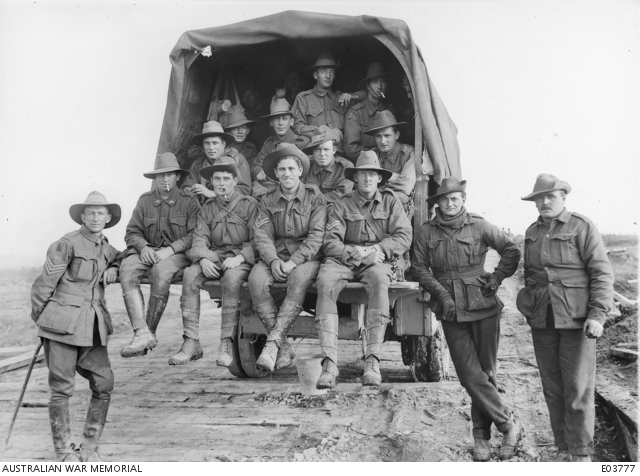
Chisolm seated on right at rear of truck AWM EO3777
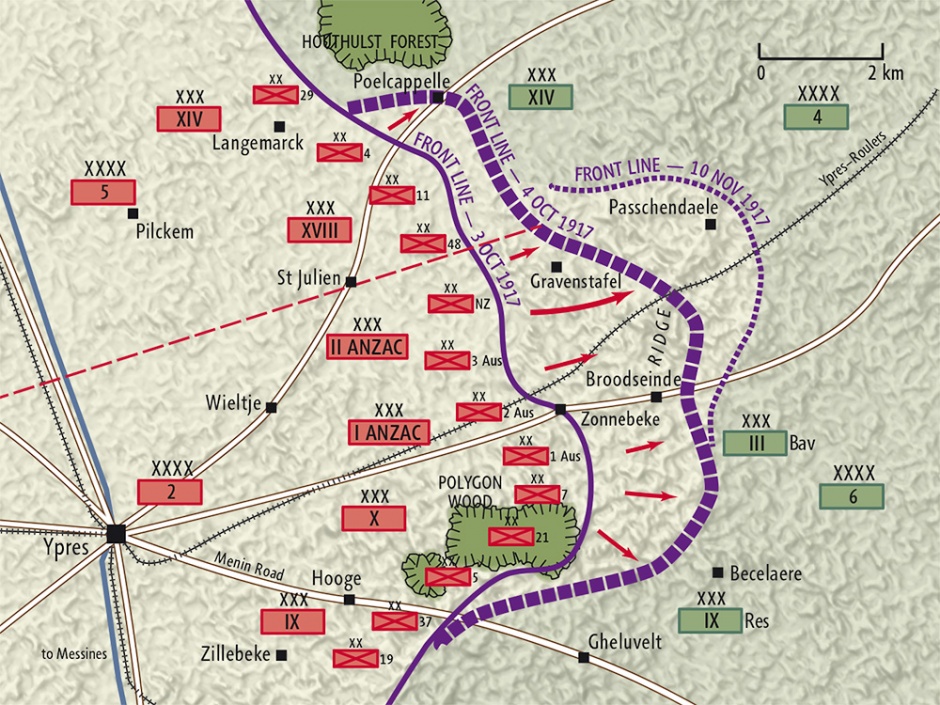
Battles of Broodseinde and Passchendaele courtesy of NewZealand online
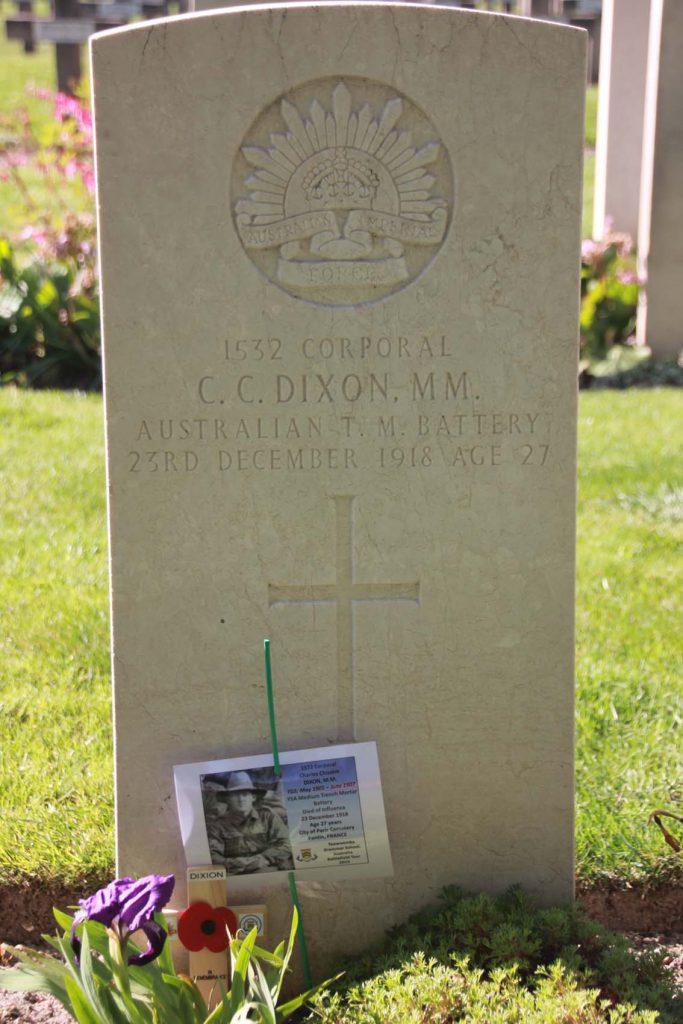
Headstone for CC Dixon taken by Ann Hallam
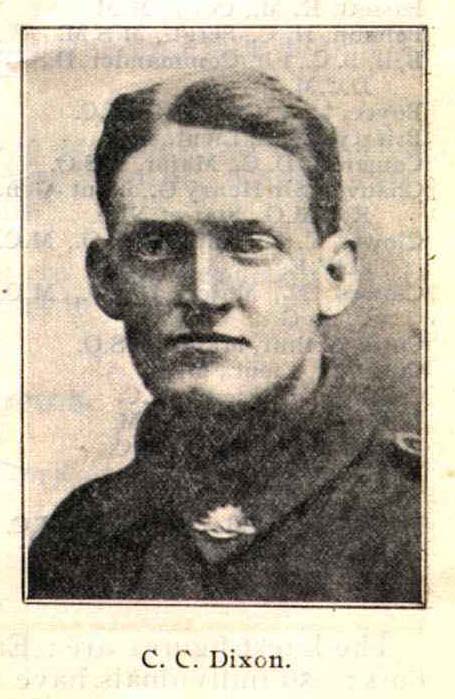
Photo of CC Dixon from TGS School Magazine dated May 1919


